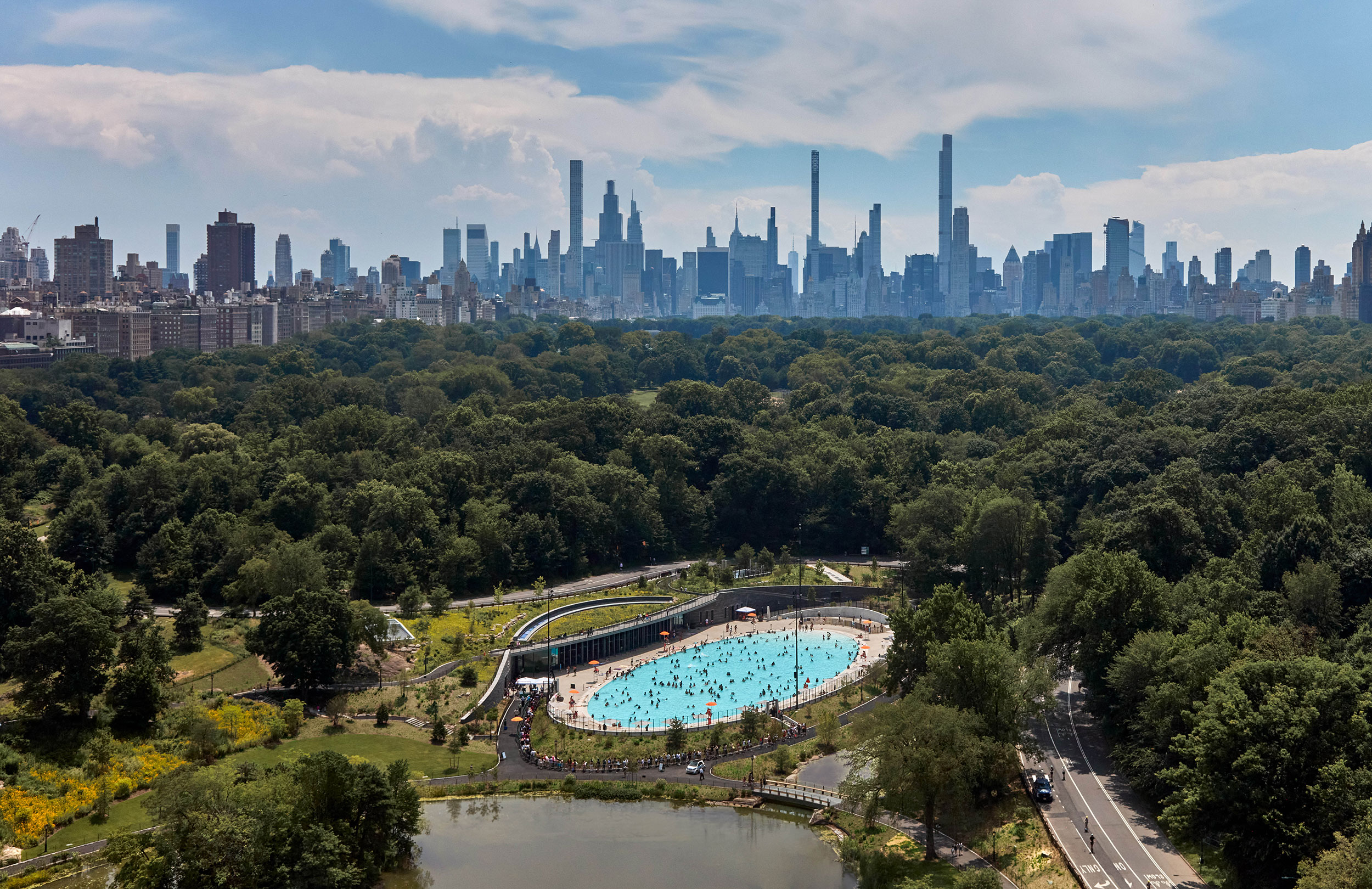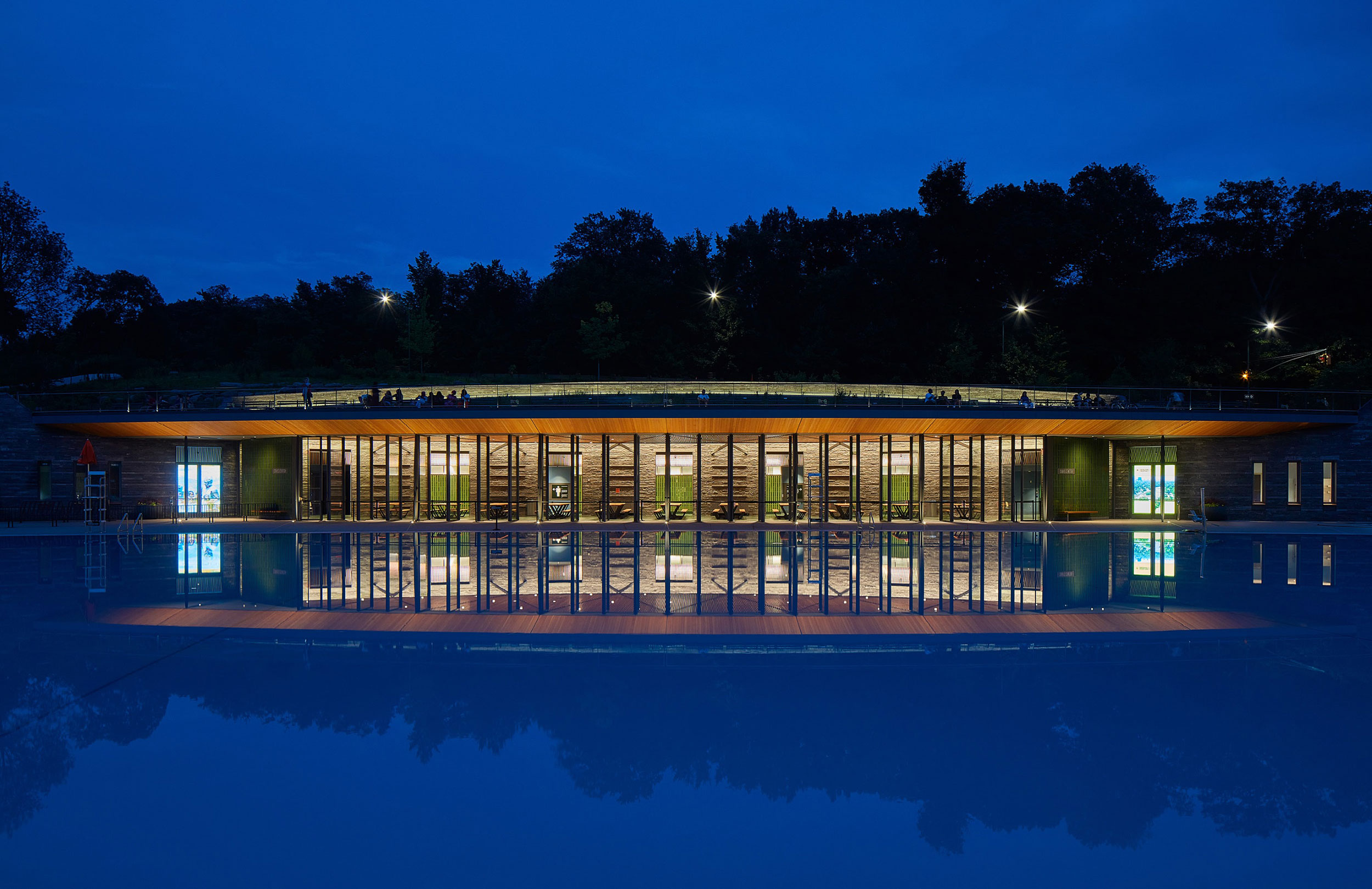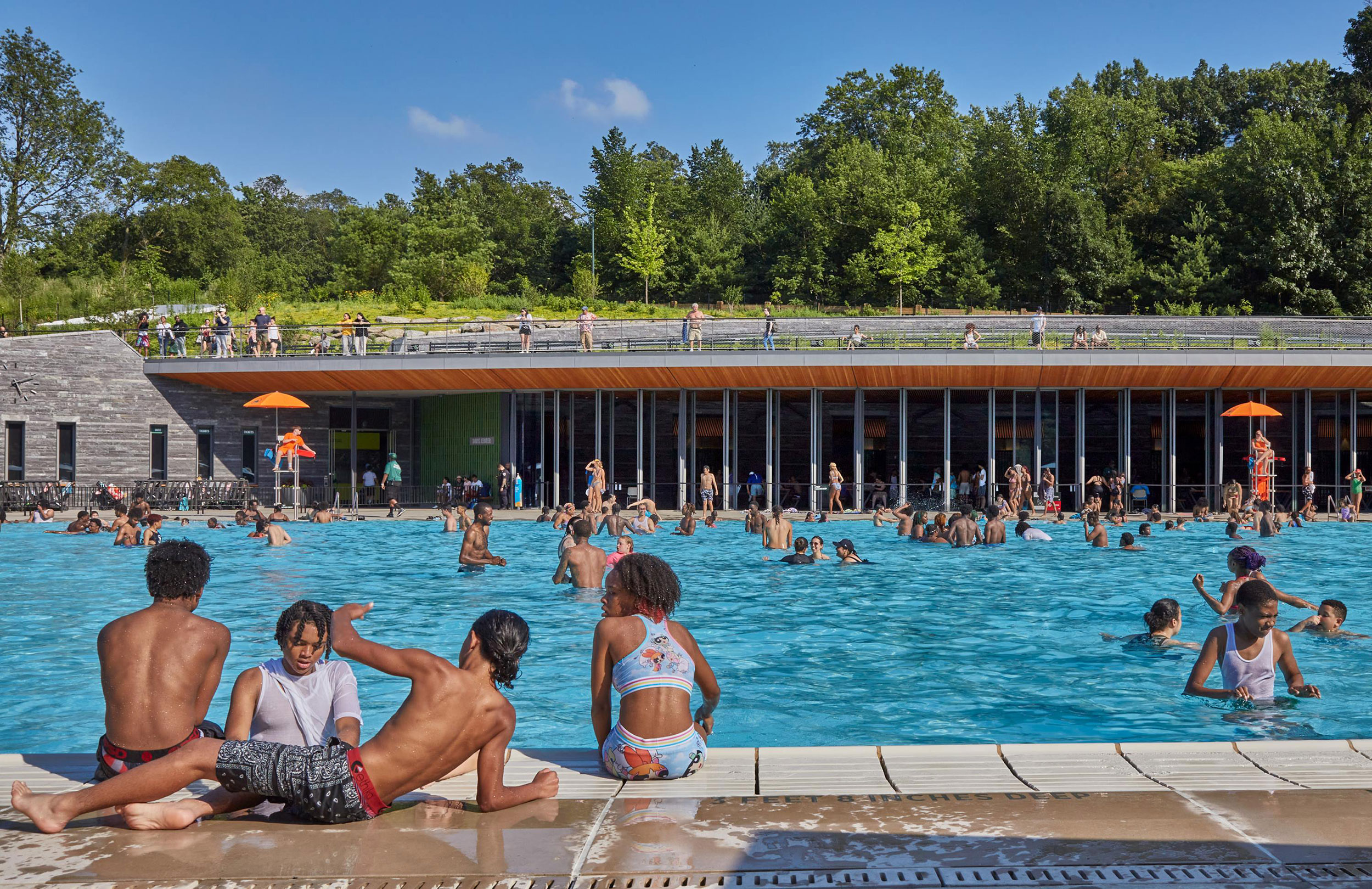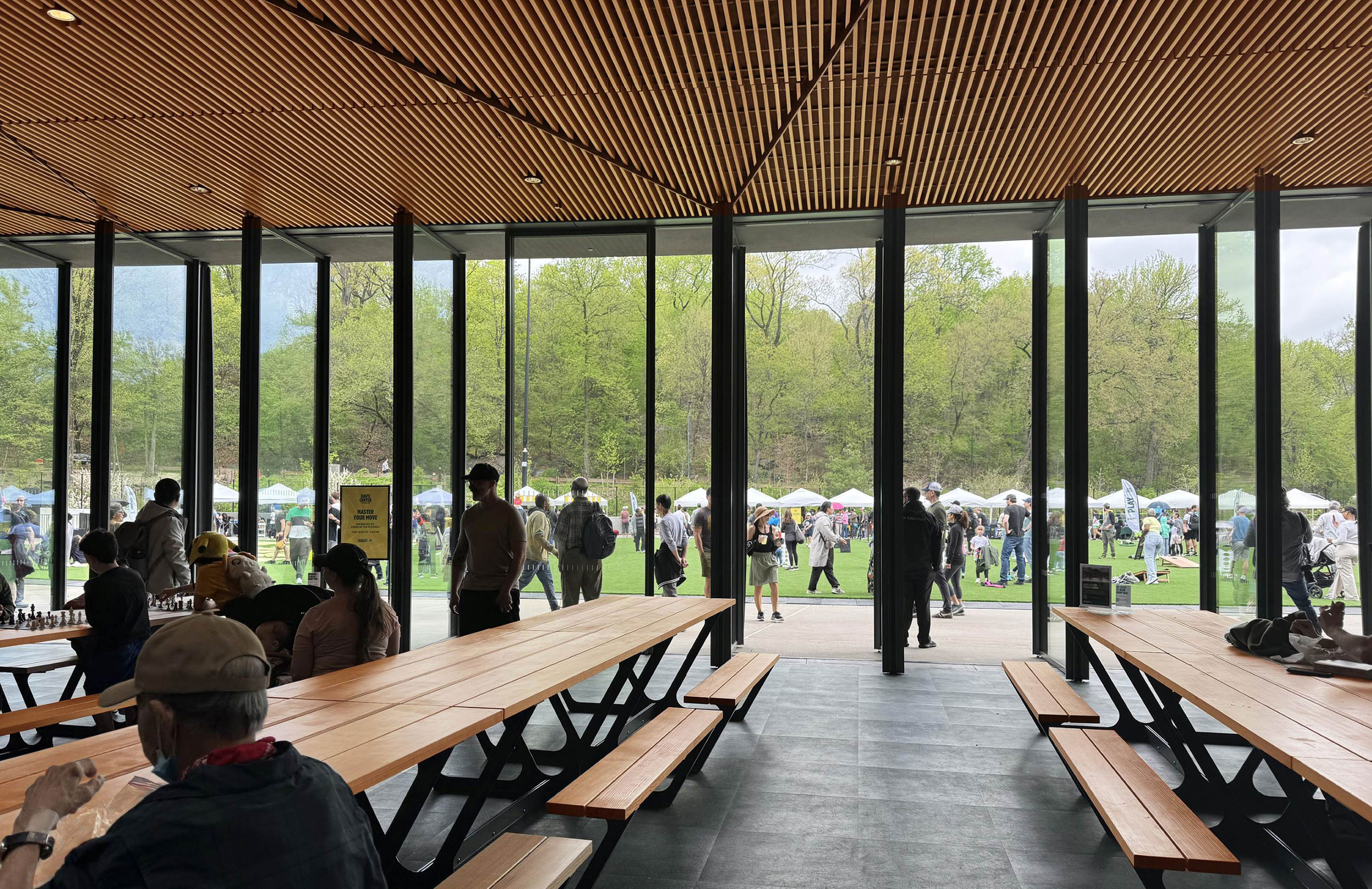We’re counting down to the Archtober Festival!
Start exploring October events here.
Shop
Take home a piece of the festival


In conjunction with the Archtober 2025 festival theme, Shared Spaces, we're celebrating the city’s public life with a closer look at the series of illustrations depicting various public spaces around NYC, including the The Davis Center at the Harlem Meer!
In conjunction with the Archtober 2025 festival theme, Shared Spaces, we're celebrating the city’s public life with a closer look at the series of illustrations depicting various public spaces around NYC, from Little Island to Luna Park to the Roosevelt Island tramway—to the The Davis Center at the Harlem Meer! This series highlights a festival illustration (created by Greater Studio) and features a short Q&A about the organization or initiative featured.

The Davis Center at the Harlem Meer embodies a vibrant shared space, where city and landscape come together to make the city a more inclusive and inviting place. The Davis Center is also the site of a Building of the Day tour on October 29 and is featured in our Archtober Coloring Sheets, available to download and print for free. Hear more about the project from the design team in our Q&A below!
PROJECT: The Davis Center at the Harlem Meer
DESIGN ARCHITECT: Susan T Rodriguez | Architecture • Design
EXECUTIVE ARCHITECT: Mitchell Giurgola Architects
LANDSCAPE ARCHITECT: Central Park Conservancy
Q: What was the central design concept or guiding principle behind the Davis Center, and how did you want the architecture to shape visitors’ experience of Central Park?
The Davis Center at the Harlem Meer was inspired by Central Park’s monumental and historic landscape and the potential to reconnect the park to the Harlem community. The project responds to the topography and the curvilinear geometry of the landmarked Park and builds upon the historical framework and aspirations envisioned by Olmsted and Vaux. In their own words, “The primary purpose of the Park is to provide the best practicable means of healthful recreation for the inhabitants of the city.” A 21st century overlay to the site, the Davis Center celebrates the natural world and local culture. The design transforms the site and re-opens up the Park to the surrounding community, shaping an experience that heightens visitors’ awareness of being in the Park.

Q: How did the unique setting within Central Park influence your design choices—both in terms of blending with the natural landscape and standing out as a civic destination?
Situated at a site that uniquely embodies both urban intensity and expansive landscape, the Davis Center was designed to heighten a distinct awareness and enhanced experience of being in the Park. The design brings together a desire to restore Central Park’s historic landscape while at the same time creating a sustainable architectural expression and symbol of community engagement. Embedded into the site’s topography, the Davis Center is seamlessly woven into the surrounding landscape, while a sweeping glass facade reveals its inner activity. This transparency blurs the distinction between interior and exterior to visually extend the park landscape into the building and reinforce a sense of welcome. The design creates a distinctive civic threshold where city and landscape converge—transforming the Park’s northern edge and strengthening connections between Harlem, the Davis Center, and the larger park.

Q: Since the Davis Center is meant to welcome a wide range of park users, how did you approach designing shared spaces that feel inclusive, flexible, and engaging?
Designing for engagement and inclusion began with the vision for a recreational hub that welcomes the community year-round. The Davis Center brings this ambition to life with its unique ability to transform seasonally—a pool in the summer, rink in the winter and open turf in the spring and fall—three buildings in one. The interior of the building responds to the programmatic change of the monumental outdoor room with amenities that support seasonal recreational activities, including changing rooms in the summer and skate rentals in winter. An interior public gathering space unifies the experience, weaving together interior and exterior with a transparent wall of center pivot floor-to-ceiling glass panels that frame views of the surrounding Park landscape. This flexible threshold allows the space to shift from a porch in warmer months to a warming hut in winter.
The center serves as both a recreational destination and a civic resource with accessible spaces that support well-being, play, and gathering for all. Informed by community input, the project reflects collective objectives—removing ecological obstacles, enhancing recreational opportunities, and creating spaces that invite people to connect. Integrating these values into the design not only reinforces a sense of belonging but also encourages continued engagement, positioning the northern end of Central Park as an inclusive and vital public space.

Q: What role did sustainability and material selection play in the project, and were there any innovations or challenges in building within a historic and ecological environment like Central Park?
The design reimagines eight acres of the northern end of Central Park to create a sustainable recreational experience deeply embedded in the historic landscape. Conceived as a full transformation of the site, the project reconstitutes the historic watercourse and pedestrian connection to the southern part of the Park and establishes a boardwalk along the adjacent Meer shoreline. Underpinning the renewal of the site and the integration of the building into the topography is a sustainable design strategy that repairs the damaged park ecology, hydrology and circulation. The use of locally sourced materials, passive heating and cooling, bird safe glass and energy and water-conserving systems were integrated into the design from the outset. Durable materials were selected to minimize maintenance and support intensive public use. The green roof is designed to blend seamlessly with the adjacent park landscape, enhance the natural habitat, address storm water management on the site, and improve overall ecological health of the Park’s northern end. Building within the historic and ecologically sensitive environment of Central Park required balancing contemporary performance needs with preservation of the landmarked landscape. Creating a facility that serves as three buildings in one—pool, rink and green—posed unique design challenges. An innovative integration of architecture, landscape, and infrastructure allows multiple layers of systems to coexist within a compact footprint while remaining invisible within the topography. Mechanical, structural, and environmental systems were carefully interwoven to enable the seamless seasonal transformation of the outdoor room and interior support functions. The result is an adaptable, high-performance facility that operates efficiently within the Park landscape and supports year-round public use.

Q: How do you hope the Davis Center contributes to the cultural and social life of New York City, and what kind of legacy do you envision it leaving for future generations of park-goers?
The Davis Center transforms the northern end of Central Park to create More Park! and a vital community resource that strengthens Harlem’s connection to the rest of the Park. The design welcomes the surrounding community and redefines the site as a place of inclusion, dignity and renewal. Affirming the Park’s enduring role as a democratic space at the heart of New York City life, the design process was deeply informed by collective goals established with community members. The new center reflects the needs and aspirations of local residents with deep personal, cultural, and historic ties to the site. Quickly integrated into the daily lives of community members, the Center drew thousands of visitors on opening day and has since remained an active gathering space for the community. The Davis Center activates public engagement and increases quality of life throughout the year with three buildings in one—pool, rink and green—to provide accessible opportunities for both recreation and leisure. The interior gathering space extends the life of the Park indoors by serving as a flexible space that fosters community connections and supports a diverse range of activities. A comfortable and welcoming environment, the Davis Center is a space to connect with family and friends in a natural setting. Seamless integration of the building into the landscape heightens awareness of being in the Park and provides a sense of retreat from the city. The project reconstitutes the historic watercourse and pedestrian connection between the Southern part of the park and the Harlem Meer, strengthening ecological systems and weaving connections between surrounding urban neighborhoods and the natural world. The Davis Center transforms a once-isolated portion of the Park into a vibrant public space, reinforcing a sense of belonging and collective ownership.
